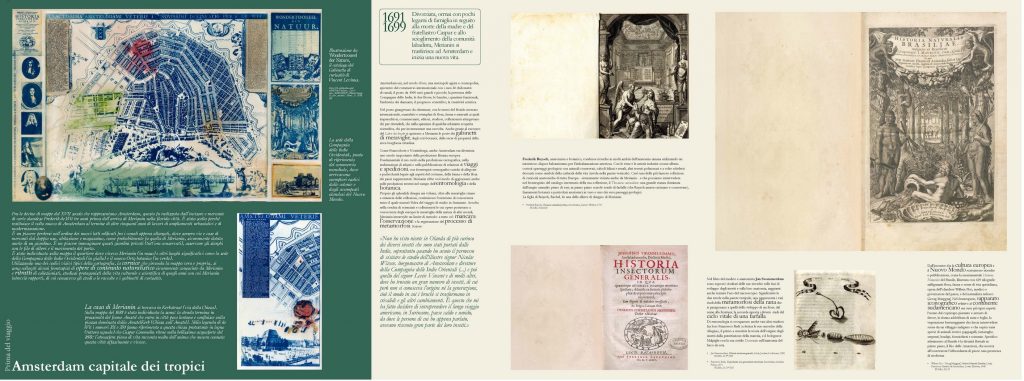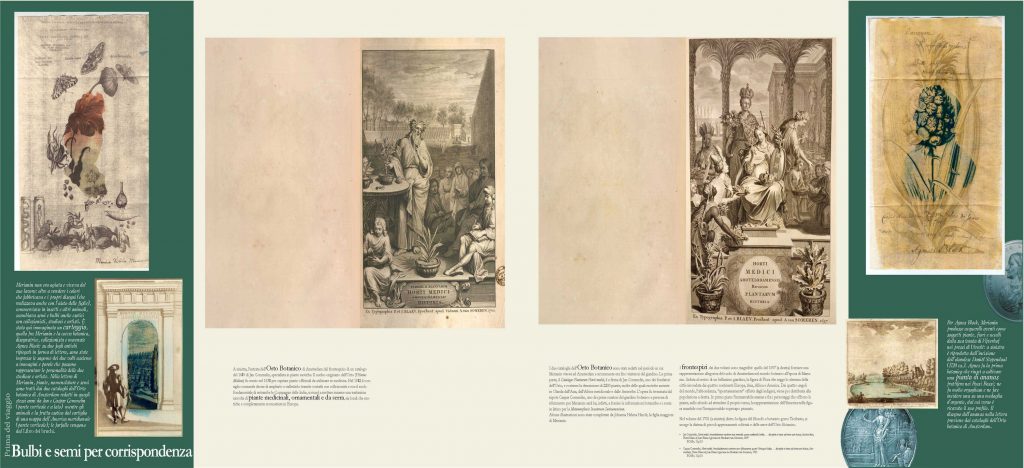Divorced and with few family ties after the death of her mother and half-brother Caspar, in 1691 Merianin decided, partly as a result of the dissolution of the Labadist community, to move to Amsterdam with her daughters to start a new life.
The city was, during the Dutch Golden Age, a wealthy and cosmopolitan metropolis, the epicentre of international trade, where artefacts and specimens of flora, fauna, and minerals arrived from overseas to the benefit of entrepreneurs, merchants, publishers, scholars, and collectors In Amsterdam, Merianin came in contact with the protagonists of the cultural and scientific life of the time and was able to get hold of recent publications in the fields of entomology and botany. She had already published two books, one on floral subjects and the other on the transformation of caterpillars. Thanks to the success of the latter, the doors of cabinets of curiosities, botanical gardens, and greenhouses owned by the wealthy urban bourgeoisie were open to her.
On display are pictures and volumes of entomology and botany that circulated in the scientific environment of the time and which Merianin was certainly familiar with, views of famous city Wunderkammer, catalogues of the Amsterdam Botanical Garden.The district where Merianin lived is indicated on a 17th-century map of Amsterdam.


